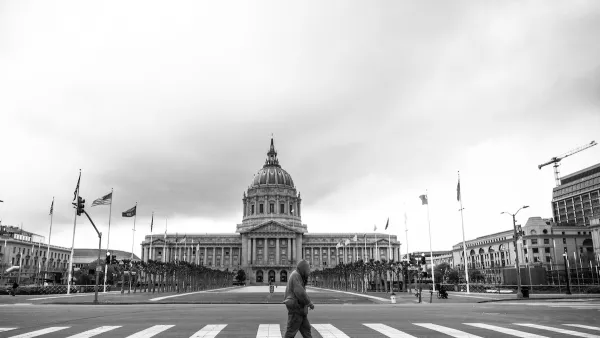Over the weekend, a massive fire burning near Yosemite National Park continued to grow, prompting Governor Brown to declare a state of emergency for San Francisco County (more than 100 miles to the west) and altering the area's treasured landscape.
Having burned 144,000 acres since it started more than a week ago near Yosemite National Park, the Rim Fire quickly became one of California's largest wildfires on record over the weekend. And while crews have reported making progress in battling the blaze, the fire was still only 7 percent contained as of Sunday and continued to threaten a major source of San Francisco’s water and power supplies.
"Fire crews continued to battle the blaze on the ground and from the air Sunday, and strong winds from the south were expected to push the fire to the north and east - driving it farther into the northwest corner of Yosemite National Park and in the direction of the Hetch Hetchy Reservoir, the main source of drinking water for 2.6 million people in the Bay Area," reports John Coté.
"So far, there have been no interruptions to the water supply, and testing has shown no change in drinking water quality since the fire began, said Tyrone Jue, a spokesman for the San Francisco Public Utilities Commission."
"The same could not be said for the city's hydropower generation," notes Coté. "Two of three power production plants downriver from the reservoir had to shut down before the fire swept through, prompting the city to rely on reciprocal agreements with other utilities and to spend about $600,000 buying supplemental power to make up the shortfall, Jue said."
FULL STORY: Crews making progress on Sierra's Rim Fire

Planetizen Federal Action Tracker
A weekly monitor of how Trump’s orders and actions are impacting planners and planning in America.

Chicago’s Ghost Rails
Just beneath the surface of the modern city lie the remnants of its expansive early 20th-century streetcar system.

Amtrak Cutting Jobs, Funding to High-Speed Rail
The agency plans to cut 10 percent of its workforce and has confirmed it will not fund new high-speed rail projects.

Ohio Forces Data Centers to Prepay for Power
Utilities are calling on states to hold data center operators responsible for new energy demands to prevent leaving consumers on the hook for their bills.

MARTA CEO Steps Down Amid Citizenship Concerns
MARTA’s board announced Thursday that its chief, who is from Canada, is resigning due to questions about his immigration status.

Silicon Valley ‘Bike Superhighway’ Awarded $14M State Grant
A Caltrans grant brings the 10-mile Central Bikeway project connecting Santa Clara and East San Jose closer to fruition.
Urban Design for Planners 1: Software Tools
This six-course series explores essential urban design concepts using open source software and equips planners with the tools they need to participate fully in the urban design process.
Planning for Universal Design
Learn the tools for implementing Universal Design in planning regulations.
Caltrans
City of Fort Worth
Mpact (founded as Rail~Volution)
City of Camden Redevelopment Agency
City of Astoria
City of Portland
City of Laramie





























